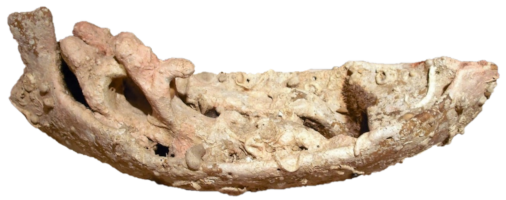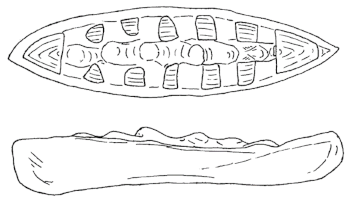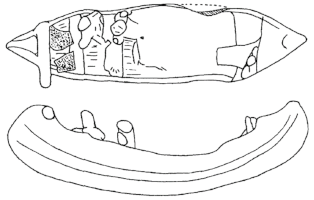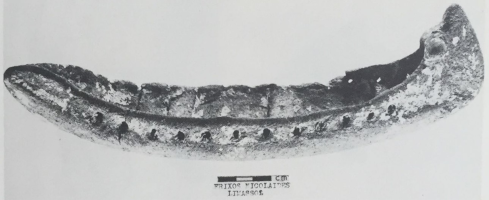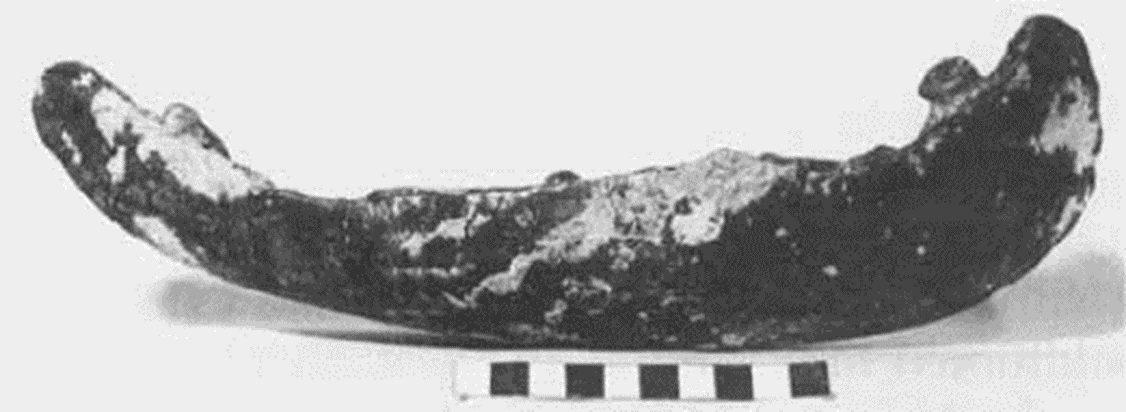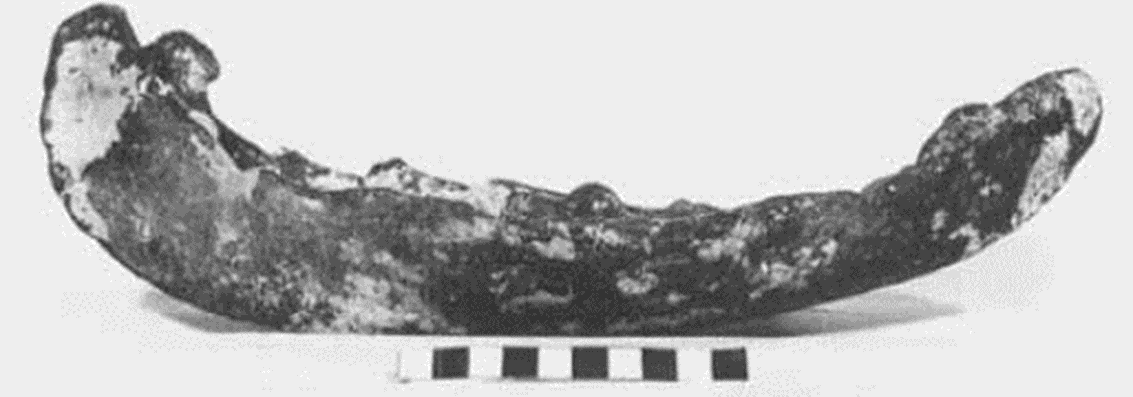Crescentic hull with an asymmetrical profile and a round, smooth bottom without any sign of a keel. The hull's maximum breadth is located at a 40:60 point on the longitudinal axis. The stempost (?) rises steeply in a near vertical, incurving slightly. The sternpost has a gentler rise and does not curve inwards. Viewed in profile, the posts have sharp pinched edges that resemble and additional strake. One of the sides is more worn than the other. The inside of the model has eight evenly spaced lateral benches (1 cm thick). Five of the benches have protrusions which are connected longitudinally between the benches, indicating the remains (lower sections only) of five pairs of oarsmen. One bench is without protrusions, connected to the adjacent bench by an oarsman's legs. In contrast to the other five benches where the connection between the rower's legs is above the benches, the connection to the sixth one without an oarsman is on the underside. The distance between the rowers and the gunwale is on average 3.1 cm. The average width of the rowers is 1.9 cm, with an average space between rowers on the same bench being 2.1 cm. The model originally had five pairs of rowers, their backs facing the wider end while their legs stretched towards the narrower end of the boat. The bench at the bow has a protrusion close to the side that possibly represents an installation for an anchor. The bow also has two small holes (2mm in diameter) on either side made before firing. One is located close to the bench, while the other is nearer the end and higher. The bench at the stern likewise has a stub in its center, probably representing the lower part of a now missing helmsman.
Ship model with rowers
L44
Archaic (?)
from the sea, the Phoenician coast near Tyre
L: 38.8 cm; W: 12.8 cm; H: 12 cm; max. H (amidships): 5 cm; depth of hold (internal): 4.6 cm
Terracotta model of finely levigated reddish-brown clay covered with marine encrustation
Hecht Museum no. H-3296
Raban and Kahanov 2003: 63-66, figs. 3-4
Raban, A. and Y. Kahanov. 2003. “Clay Models of Phoenician Vessels in the Hecht Museum at the University of Haifa, Israel,” IJNA 32.1: 61-72.


